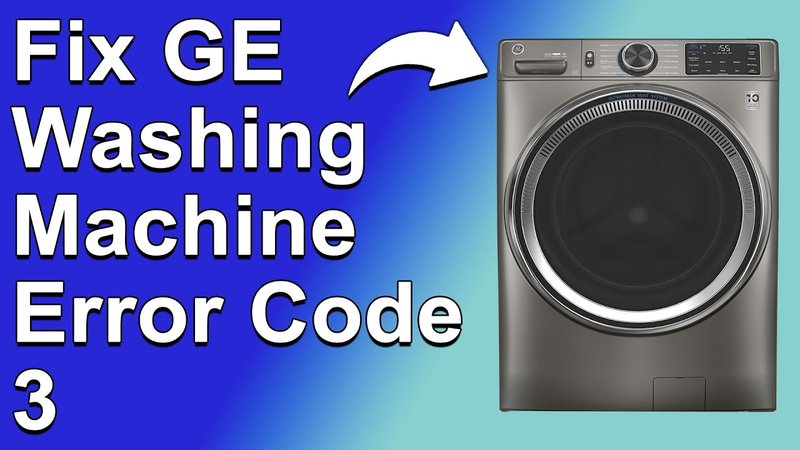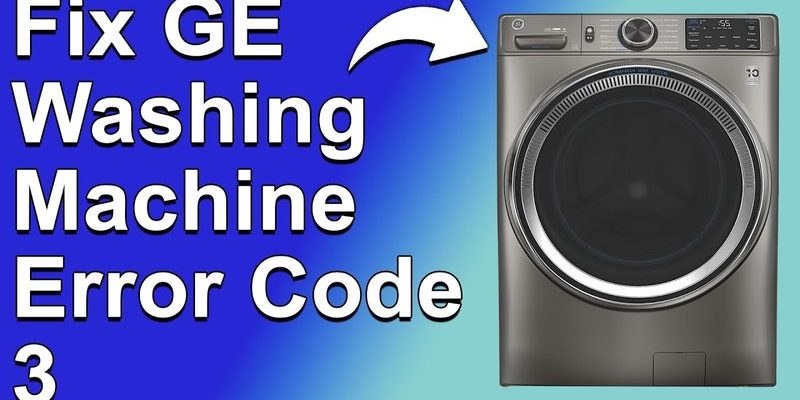
Picture this: You’ve loaded your washing machine with clothes, pressed start, and instead of quietly humming away, it stops and flashes “SE” at you. What’s that all about? Simply put, this code refers to a sensor error, often triggered by issues with the machine’s water sensor. This sensor is crucial because it helps the machine gauge the right amount of water to use. When it fails, your washer can’t do its job properly, leading to confusion and inconvenience.
Understanding the SE Error Code
The SE error code might sound technical, but here’s the deal: it’s all about malfunctioning sensors. Sensors in a washing machine work like your senses—they help the machine ‘see’ and ‘feel’ what’s going on. The “SE” stands for “Sensor Error,” meaning the machine’s sensors aren’t communicating correctly with the central system. But what’s causing this hiccup?
You might be wondering how a simple sensor error can disrupt the whole cycle. Well, think of it as a misunderstanding. Just like in any conversation, if one party misses key info, the whole exchange can fall apart. In this case, the ‘conversation’ between the washing machine’s control board and its water sensor is scrambled. This breakdown in communication tells the control board to stop the cycle, ultimately flashing the SE error code to grab your attention.
So, what’s the solution? First, resist the urge to panic. Although it might feel like a major crisis, the SE error often results from minor issues, like a kinked hose or a temporary glitch in the system. The key here is understanding what might cause these sensor errors in the first place, so let’s delve into some common culprits.
Water Supply Issues
Here’s a scenario: imagine you’re trying to fill a glass of water from a tap, but the water flow is weak or inconsistent. You’re bound to get frustrated, right? It’s the same for your washing machine. A faulty water inlet valve or a clogged hose can lead to insufficient water flow. This insufficient flow confuses the sensors, causing them to throw an SE error.
Water supply issues can often be resolved with a few simple steps. First, check your home’s water pressure. Low pressure can impede the washer’s ability to fill up quickly. Make sure all the water hoses are correctly connected and not twisted. A twist or kink in the hose can be like a clogged straw, cutting off necessary flow. You should also inspect the inlet screens for any blockages like dirt or debris, which can act like a traffic jam in the waterway.
Fixing these problems often clears up the error without further fuss. However, if the issue persists, it might be time to consider whether the inlet valve needs replacing. This is an easy fix for professionals, and it can save you from endless headaches.
Electrical Malfunctions
You might be curious, can an electrical glitch really trigger the SE error? Absolutely! Imagine your washing machine as a computer. If there’s a sudden power surge or electrical fault, it can cause a temporary short-circuit, much like a computer freezing and needing a reboot.
Electrical issues are sneaky because they aren’t always apparent. A faulty wire connection or a blown fuse within the machine can interrupt communication to and from the sensors. When this happens, the machine might misinterpret the lack of signal as a sensor failure, flashing the SE error code as a result.
To address this, start by unplugging the machine for a few minutes, then plug it back in. This simple reset can sometimes clear the error if it was just a minor glitch. However, if the problem still occurs, it might be time to call in a professional. They can safely open up the machine, check wiring connections, and test other components for faults.
Dirty or Faulty Sensors
Lastly, consider the sensors themselves. Just like your phone’s camera lens can get smudged, preventing clear photos, your washing machine’s sensors might be dirty or damaged. Over time, detergent residue, mineral deposits, or even mechanical wear can render a sensor ineffective.
A quick clean can sometimes do wonders. Disconnect your machine (always prioritize safety!) and locate the sensors, usually near the water inlet. Gently clean them with a soft cloth and mild cleaner to remove any buildup. However, if cleaning doesn’t help, replacement might be the next best step. Again, professional help ensures you don’t accidentally damage other parts of the machine during this process.
Next Steps and Preventative Tips
So, you’ve tackled the SE error once, but how do you prevent it in the future? Regular maintenance and a little vigilance go a long way. Ensure hoses are always checked for kinks or debris, and keep an eye on water pressure. Regularly inspect and clean your sensors to avoid buildup that might start causing errors.
Also, consider installing a water softener if hard water is a known issue in your area. Hard water can lead to mineral buildup, which affects not only sensors but many other parts of your washing machine.
In conclusion, while the SE error can seem daunting, it often stems from simple issues. With some basic troubleshooting and preventative care, you can keep your GE washing machine running smoothly and avoid any laundry day drama. Remember, whenever in doubt, consult with a professional—they’re there to help keep your appliances in perfect working order.
